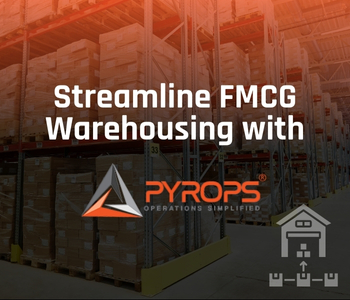The logistics industry is undergoing a significant transformation with the rise of micro-warehousing. As consumer demand for faster deliveries continues to grow, micro-warehousing is emerging as a game-changer in last-mile logistics. By decentralizing inventory storage and positioning smaller warehouses closer to customers, companies are able to enhance operational efficiency and speed up delivery times.
The Growing Importance of Speed in E-Commerce
In today’s fast-paced e-commerce world, customer expectations for delivery times have never been higher. Consumers now expect quicker deliveries, often within the same day or next-day delivery windows. To meet these demands, businesses must rethink their distribution strategies. Traditionally, goods were stored in large, centralized warehouses far from urban areas, which increased transportation costs and delayed deliveries.
However, the rise of micro-warehousing is helping companies address these challenges. By establishing smaller storage facilities in urban centers or strategic locations, businesses can store goods closer to their target markets. This proximity allows for faster order fulfillment, ensuring customers receive their products much sooner than they would with conventional warehouse models.
How Micro-Warehousing Enhances Operational Efficiency
One of the key advantages of micro-warehousing is its ability to optimize space utilization. Traditional warehouses often require vast amounts of space and large-scale inventory systems. Micro-warehouses, on the other hand, are designed to use space more efficiently. With a focus on high-density storage, businesses can store a variety of products in a smaller area while reducing the need for expensive real estate.
In addition to improving space efficiency, micro-warehousing also enhances inventory management. Smaller warehouses allow businesses to implement more precise inventory tracking systems, ensuring that stock levels are always accurate. This reduces the risk of overstocking or stockouts, leading to better resource management and cost savings.
Reducing Transportation Costs with Localized Warehouses
Transportation costs are a significant factor in last-mile logistics. The longer the distance between the warehouse and the customer, the more expensive it becomes to deliver products. Micro-warehousing addresses this by reducing the distance that goods need to travel, thus lowering transportation expenses. With multiple micro-warehouses spread across urban areas, delivery vehicles can travel shorter distances, minimizing fuel consumption and reducing carbon emissions.
Furthermore, micro-warehousing supports more flexible delivery options, such as same-day or next-day delivery. With products stored closer to customers, companies can offer faster delivery times, which ultimately enhances the customer experience and increases brand loyalty.
The Environmental Benefits of Micro-Warehousing
In addition to its operational benefits, micro-warehousing also offers environmental advantages. By decentralizing storage and reducing transportation distances, micro-warehousing helps lower the carbon footprint of logistics operations. Shorter delivery routes mean fewer emissions from delivery trucks, contributing to more sustainable logistics practices.
Moreover, micro-warehouses are typically located in areas with better access to public transportation and other eco-friendly infrastructure, making it easier for delivery vehicles to use cleaner energy sources. This emphasis on sustainability is becoming an increasingly important factor for consumers, as they prefer to support businesses that prioritize environmental responsibility.
Challenges and Future Outlook
Despite its many advantages, micro-warehousing is not without its challenges. The upfront costs of setting up multiple small warehouses can be significant, particularly in high-demand urban areas where real estate prices are steep. Additionally, managing a network of micro-warehouses requires sophisticated technology to ensure smooth operations and inventory control.
However, as technology continues to advance, these challenges are becoming easier to overcome. With the rise of automation, artificial intelligence, and real-time tracking systems, businesses can efficiently manage their micro-warehousing networks. This technology ensures that micro-warehouses can operate seamlessly, from inventory tracking to order fulfillment.
Looking ahead, micro-warehousing is poised to play an even larger role in the logistics sector. As e-commerce continues to grow and consumer expectations for faster deliveries increase, businesses will increasingly turn to this model to stay competitive. By improving operational efficiency, reducing costs, and enhancing customer satisfaction, micro-warehousing will continue to shape the future of last-mile logistics.
Conclusion
Micro-warehousing is revolutionizing last-mile logistics by enabling businesses to deliver products faster and more efficiently. With its ability to optimize space, reduce transportation costs, and offer environmental benefits, this approach is gaining momentum across industries. Although challenges remain, the future of micro-warehousing looks bright as businesses adapt to the demands of modern consumers and technological advancements continue to drive innovation in logistics.







